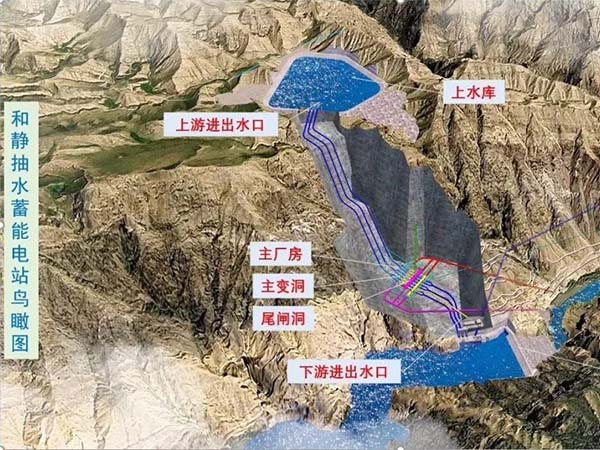The first integrated development project of pumped storage and conventional hydropower in the country has started construction

The groundbreaking ceremony for the Hejing County Pumped Storage
Power Station and the Gunhabuqile Hydropower Station was recently held
in the county. This marks the official start of the construction of the
country's first integrated development and operation of pumped storage
and conventional hydropower projects.
It is reported that the total
installed capacity of the pumped storage power station project in Hejing
County, Xinjiang is 2.1 million kilowatts, making it the largest
planned installed pumped storage power station in Xinjiang. In the
Xinjiang power grid, it mainly undertakes tasks such as peak shaving,
valley filling, energy storage, frequency regulation, phase modulation,
and emergency backup in the power system.
The Gunhabuqile Hydropower
Station is the fourth stage power station in the "two reservoirs and
seven levels" development plan for hydropower in the middle reaches of
the Kaidu River in Xinjiang, with an installed capacity of 257000
kilowatts. The power station mainly consists of dams, discharge
structures, water diversion and power generation systems, ecological
power stations, etc. As the lower reservoir of Hejing County Pumped
Storage Power Station, the Kaidu River Gunhabuqile Hydropower Station
Reservoir is planned, designed, developed, and operated as a whole for
the two projects.
The pumped storage power station in Hejing County and the Kunhabuqile hydropower station are important projects for implementing the "dual carbon" goals, building a modern energy system, and a new type of power system. It is of great significance to promote the optimization and adjustment of energy structure in Xinjiang, assist China Energy Group in green and low-carbon transformation, promote local economic development, and build a high-quality national clean energy industry highland.
The development and construction of two projects can jointly drive the development of over 8 million kilowatts of photovoltaic power in the Kaidu River Basin and the northern part of Bayingolin Mongolian Autonomous Prefecture in Xinjiang, as well as a large-scale clean energy base integrating water, solar, and energy storage. It is expected that after full construction and operation, it will save 3.9 million tons of standard coal and reduce carbon dioxide emissions by approximately 11.73 million tons annually.









 +86-021-67895388
+86-021-67895388 shghfmc@163.com
shghfmc@163.com  93862333
93862333